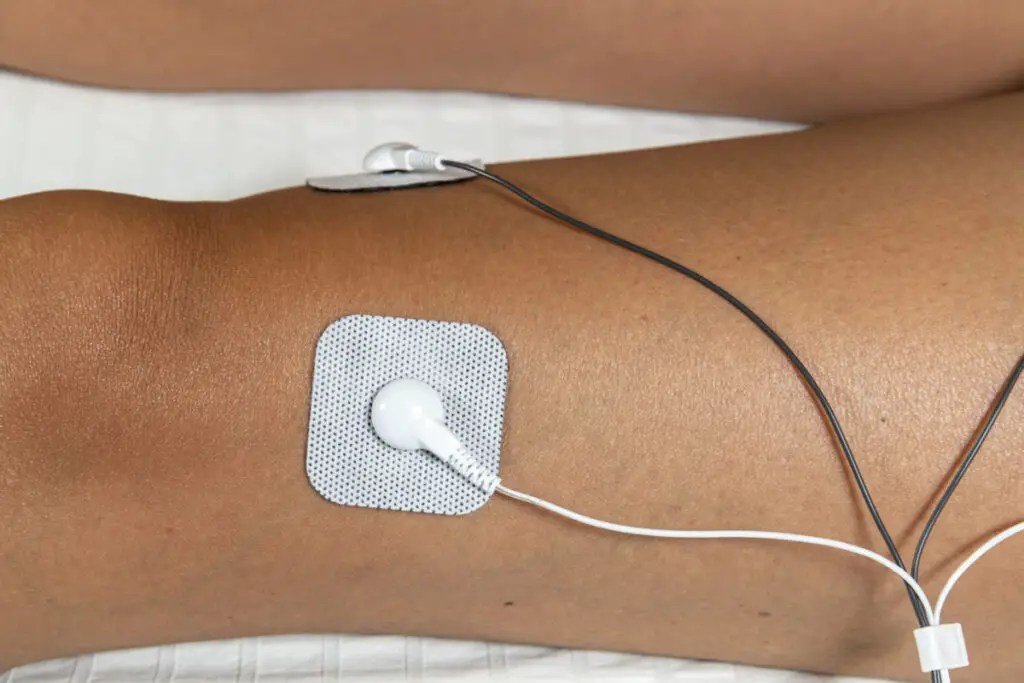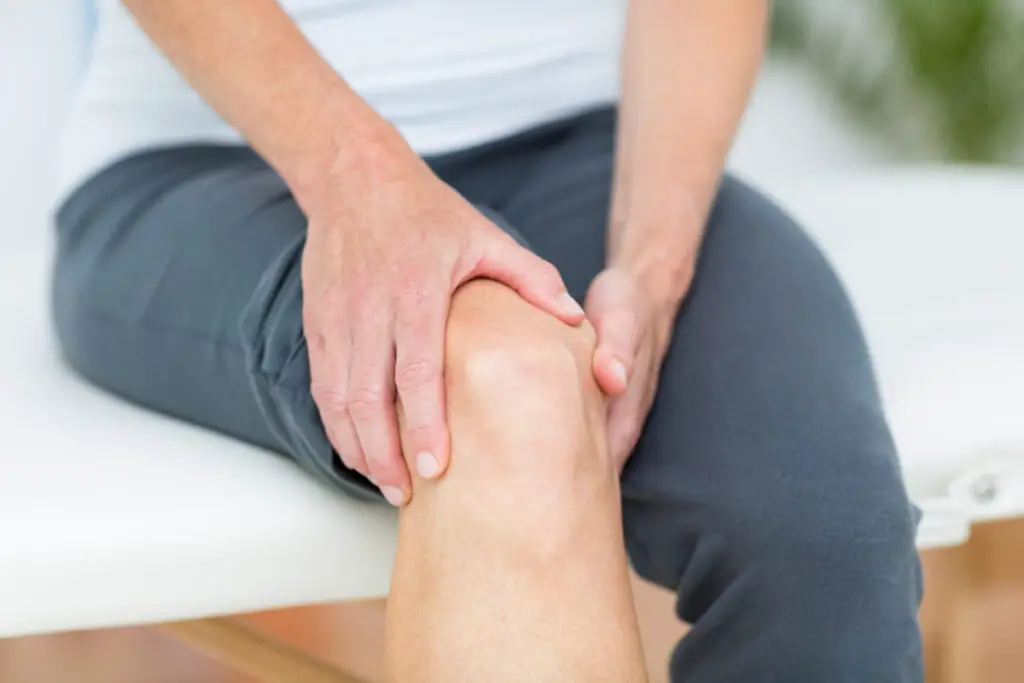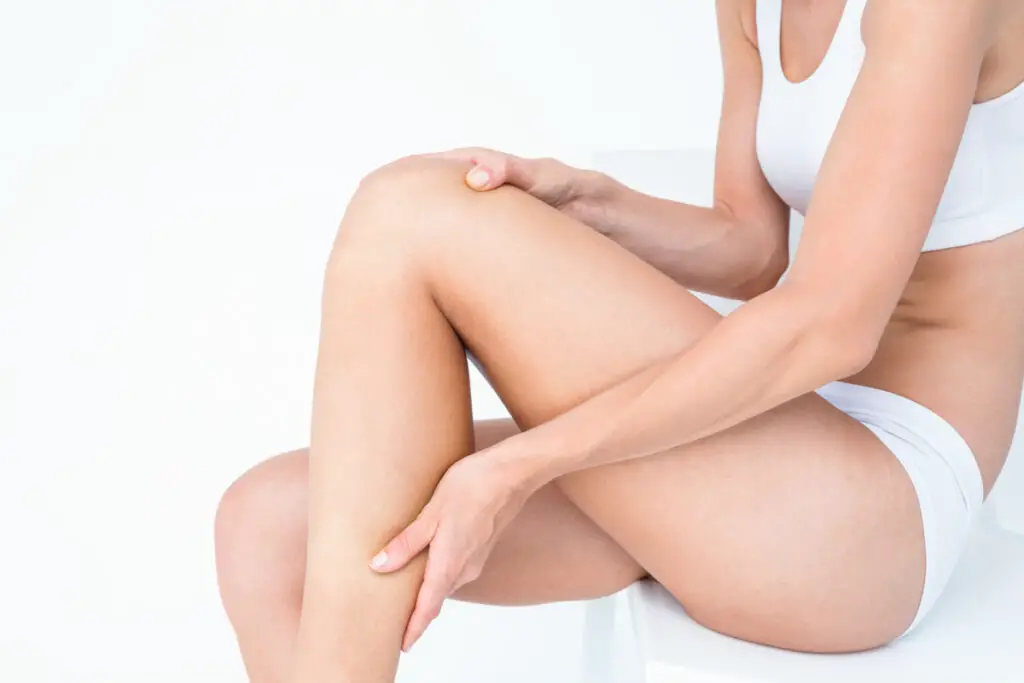As we age, we begin to feel pain in all sorts of different places! But we shouldn’t suffer in silence. Yes, there are pharmaceutical painkillers, but there are lots of issues with them!
One of the most common areas in the body where we can feel pain is the knee (I have it bad!). If you don’t like taking medication for your knees, you could try a TENS unit for knee pain.
The TENS unit is effective in relieving pain, not only in the knees, but in other areas of the body as well. To do that, you have to know how to use a TENS unit and understand the proper placement of the electrode pads on the area of your body.
In this article, I’m going to go over how I use a TENS unit to alleviate knee pain.
How To Use TENS Unit For Knee Pain

Significant knee pain can make your life uncomfortable. Knee joint and muscle pain can prevent you from enjoying the simple things that you do. Stair climbing can be painful, and long walks or runs can be excruciating.
But there is a way to reduce and alleviate knee pain without taking medication or surgery! A TENS machine may be your answer.
That’s right, the pain you feel in your knees can be lessened when you use a TENS (transcutaneous electrical nerve stimulation) unit. A TENS device uses electrical stimulation to calm pain in your nerves.
It helps stop or block pain signals so that the feeling of pain is lessened. It is also thought to stimulate your body to release endorphins, which are the natural painkillers of the body.
TENS Therapy for Knee Pain Management
To use the TENS unit for pain relief effectively, you should properly place the self-adhesive electrode pads. These are the pads that stick to your skin so that the electric current from the device can be delivered. You need to figure out the optimal placement of the pads for knee pain relief.
Apart from that, you need to figure out how many pads you need to use and place on and around your knee. Usually, people would use 2-4 pads on their knee to help with the pain.
The two pads are enough to cover the small area. However, you can use more to cover a larger area. The exact area where you place the pads will vary depending on where you feel the pain.
Where To Put TENS Unit Pads For Knee Pain – Proper Placement
As we’ve mentioned, proper placement of the electrode pads is essential when it comes to treating pain with a TENS unit. Even if the knee is a small area, you should still figure out where exactly to place the electrode pads on it.
Pad placement can vary based on the type and locus of pain. The electrode pads are usually placed on the sides, back, or front of the knee. Most avoid placing the electrode pads on the kneecap. Instead, the electrode pads are placed surrounding the knee cap.
You can use 2-4 pads to surround the kneecap. In some cases, some people may place the pad behind the knee to help with the pain. That placement is a good choice for those of us who deal with runner’s knee. It helps better target the cartilage behind the kneecap.
Depending on the severity of pain, you can run the TENS unit for 30-60 minutes until the pain is gone or subsided. As it comes back, you can fire up the unit again.
Causes Of Knee Pain

Knee pain is one of the most common pains that people suffer from. There are a variety of reasons why pain in the knee can be felt – there could be torn ligaments, and tears in the cartilage, or some could suffer from runner’s knee (as I do).
There are various causes of pain in the knee such as osteoarthritis, bursitis, tendonitis, over-use injury, and many others.
Those who might have a previous knee injury that wasn’t treated right could suffer from knee pain either occasionally or constantly.
The two conditions that could cause chronic pain in the knee are osteoarthritis and old knee injury.
Some people may experience pain in the knee but in the back part of the knee. This is called a runner’s knee or patellofemoral pain syndrome. With this, the pain is felt behind the kneecap.
This can be caused by the abnormal movement of the kneecap when the knee is bent and straightened. When this happens, the cartilage at the back of the kneecap could lead to wear and tear. This happens gradually until the pain is felt.
Final Thoughts
The exact use of a TENS unit will depend on the type and severity of your pain. However, with a little trial and error, you can often get significant relief from knee pain with a TENS unit, and without drugs or surgery!
Good luck!





